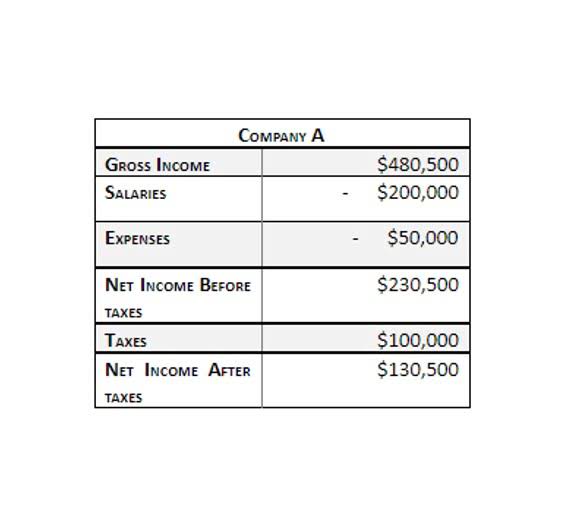Content

The assignment of overhead costs to jobs based on a predetermined overhead rate. To remain operational, a manufacturing unit also incurs indirect or overhead costs. Rent, utilities, maintenance, warehousing and supervision are examples of indirect costs that cannot be allocated to a single unit of production but must be included in total production costs. The basic purpose of overhead absorption rates is to absorb total overhead in products or jobs manufactured.
Isobel Phillips has been writing technical documentation, marketing and educational resources since 1980. She also writes on personal development for the website UnleashYourGrowth. Phillips is a qualified accountant, has lectured in accounting, math, English and information technology and holds a Bachelor of Arts honors degree in English from the University of Leeds. Hearst Newspapers participates in various affiliate marketing programs, which means we may get paid commissions on editorially chosen products purchased through our links to retailer sites. The journal entry to reflect this estimate would be a debit to Goods in Process Inventory (Project J-17) for $4,550 and a credit for the same amount to Factory Overhead.

This means that for every dollar of direct labor cost a production process uses, it will use $1.50 of overhead costs. Figure 8.41shows the monthly manufacturing actual overhead recorded by Dinosaur Vinyl.
Indirect Costs
Shall be used to calculate an estimate on the projects that are yet to commence for overhead costs. It would involve calculating a known cost and then applying an overhead rate to this to project an unknown cost .
- It is equal to the estimate overhead divided by the estimate production quantity.
- This approach is used when costs exist and there is an expected benefit, even though the costs cannot be directly traced to the benefit.
- And then, allocate those expenses to the expected total number of units of products that the entity expected to produce for the same period.
- The basic purpose of overhead absorption rates is to absorb total overhead in products or jobs manufactured.
E.M. Rawes is a professional writer specializing in business, finance, mathematical and social sciences topics. She completed her studies at the University of Maryland, where she earned her Bachelor of Science. During her time working in workforce management and as a financial analyst, she reinforced Predetermined Overhead Rate her business and financial know-how. Once you have a good handle on all the costs involved, you can begin to estimate how much these costs will total in the upcoming year. Conversely, the cost of the t-shirts themselves would not be considered overhead because it’s directly linked to your product .
As Good As Historical Data
Anytime you can make the future less uncertain, you’ll be more successful in your business. You are provided with the cost data from twelve observations of electricity, a semi-variable cost. J) The costs of salaries and on-costs for sales and administrative personnel paid in cash during June amounted to $8,500. FundsNet requires Contributors, Writers and Authors to use Primary Sources to source and cite their work. These Sources include White Papers, Government Information & Data, Original Reporting and Interviews from Industry Experts.
Companies go for the pre-determined rate and apply it to overhead costs than using the actual cost because the management needs to know the overhead rate before the year-end to simplify the record-keeping. In order to accurately calculate the https://www.bookstime.com/, the historical cost should be handy. The more historical data a company has, the greater accuracy it would have in ascertaining the pre-determined overhead cost. Direct labor and machine hours can be traced to specific production units. Workers and machines that are directly involved in the production process fall under this category.
What Is Normal Costing?
Figure 2.6 “Overhead Applied for Custom Furniture Company’s Job 50” shows the manufacturing overhead applied based on the six hours worked by Tim Wallace. Notice that total manufacturing costs as of May 4 for job 50 are summarized at the bottom of the job cost sheet. Remember that overhead applied does not represent actual overhead costs incurred by the job—nor does it represent direct labor or direct material costs. Instead, overhead applied represents a portion of estimated overhead costs that is assigned to a particular job. First, if predetermined overhead rates are based on budgeted activity, then the unit product cost will fluctuate depending on the budgeted level of activity for the period. For example, If the budgeted output for the year was only 3,00,000 CDs, the predetermined overhead rate would be $0.06 per second of machine time or $0.60 per CD rather than $0.30 per CD. In general if budgeted output falls, the overhead cost per unit will increase; it will appear that the CDs cost more to market.
Learning about predetermined overhead rate and how you calculate it can help you use this tool for yourself. CFO needs you as the cost accounting to calculate the overhead rate for this coming year. Base on the expectation from the budgeting department, the total overhead expenses would be $6,00,000. When the absorption is based on actual overhead, it is known as actual absorption rate. This can be calculated only after the end -of the accounting period when all cost and production figures have been collected.
How To Calculate Predetermined Overhead Rate
In this case, we might consider only the variable and incremental cost. Total estimated overhead cost for the two product line is $700,000.

Company XYZ determined that its overhead costs are $20 per labor hour. The organization is now aware that if a job takes 10 hours, the overhead cost for that job is $200.
Difference Between Overapplied & Underapplied Overhead
Indirect materials are materials used in the support process, such as cleaning supplies and repair tools. Indirect labor encompasses wages paid to employees such as maintenance workers, who are not directly involved in the manufacturing process. Because the company cannot place a per-unit cost on these expenses, they are placed under total manufacturing overhead costs.
For example, if the annual budget is based on a production quantity of 10,000 units and the direct labor required for each unit is three hours, the total direct labor is 10,000 x 3 or 30,000 hours. The total overhead expenditure is then divided by the total labor hours to arrive at the overhead rate. If, in the example, total overhead amounts to $120,000 a year, the overhead rate will be $120,000 divided by 30,000 hours, or $4 per hour. As each unit requires three hours of labor, the indirect cost of each unit is $4 x 3, or $12. The predetermined overhead rate for machine hours is calculated by dividing the estimated manufacturing overhead cost total by the estimated number of machine hours. This formula refers to the predetermined overhead because this overhead total is based on estimations, rather than the actual cost.
The application rate that will be used in a coming period, such as the next year, is often estimated months before the actual overhead costs are experienced. Often, the actual overhead costs experienced in the coming period are higher or lower than those budgeted when the estimated overhead rate or rates were determined.
How To Calculate The Total Manufacturing Price Per Unit
The cost of your office rent would be considered overhead because it’s something you have to pay regardless of how many t-shirts you sell. But before we dive deeper into calculating predetermined overhead, we need to understand the concept of overhead itself. Let’s take an example to understand the calculation of Predetermined Overhead Rate in a better manner. Compare the above method of cost estimation with engineering approach, with respect to the costs and benefits of the two approaches. Complete the job cost sheets for job number C40 (Round-off unit cost to the nearest cent and where necessary, show ALL relevant workings. N) 75% of the water tanks in job number C40 were sold on account during June for $750 each.

Therefore, the predetermined overhead rate of TYC Ltd for the upcoming year is expected to be $320 per hour. Is the work done by employees not directly involved in the manufacturing process, such as the supervisors’ salaries or the maintenance staff’s wages. Because these costs cannot be traced directly to the product like direct costs are, they have to be allocated among all of the products produced and added, or applied, to the production and product cost. Determine the estimated total manufacturing costs for the Patterson High School job. I am looking for the predetermined manufacturing overhead rate for each department.
The overhead used in the allocation is an estimate due to the timing considerations already discussed. For the last three years, your team found that the total overhead rate has been between 1.7 and 1.8 times higher than the direct materials rate. As such, you and your peers have agreed to set the predetermined overhead rate at 175% of the direct materials rate.
The company can calculate the time it takes a machine to produce a part or a worker to assemble a piece of machinery with a certain degree of accuracy. Dividing overhead costs by the number of hours your machinery is used gives you the basis of determining overhead rate machine hours. Now, let’s look at some hypothetical business models to see actual use-cases for predetermined overhead rates. For example, the recipe for shea butter has easily identifiable quantities of shea nuts and other ingredients. Based on the manufacturing process, it is also easy to determine the direct labor cost.
Determine the manufacturing overhead costs that Dorothy should have applied to her hats. Also, while calculating the actual overhead cost, the abnormal factors are not taken into account. On the other hand, the predetermined overhead costs do take all the abnormal costs into account specific to the factor related to any specific job. Another benefit of a predetermined overhead rate is for Project Planning.
Predetermined overhead rate is an allocation rate that applies a certain amount of manufacturing overhead to job orders or products. Predetermined overhead is typically calculated at the beginning of each reporting period and is determined by dividing the estimated overhead costs for manufacturing by an allocation base. Some commonly used activity drivers are machine hours, direct materials, direct labor hours and direct labor dollars. The predetermined overhead rate is the estimated cost of manufacturing a product.